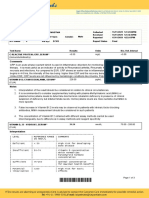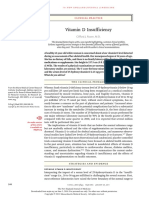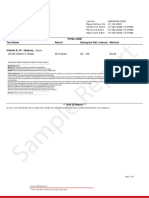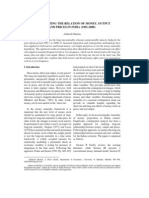Name : Mrs.
PRIYANKA Register On : 04/02/2021 11:08 AM
PID No. : GMH243269 Collection On : 04/02/2021 11:56 AM
SID No. : 8942102325 Report On : 04/02/2021 3:49 PM
Age / Sex : 31 Year(s) / Female Printed On : 05/02/2021 10:21 AM
Ref. Dr : DR.SATISH M KINI Type : OP
Investigation Observed Value Unit Biological Reference Interval
SPECIAL CHEMISTRY
Vitamin D (25 hydroxy Vitamin D) (Serum/ 9.4 ng/mL Insufficiency: <= 30
Chemiluminescent Microparticle Immunoassay Sufficiency: 31 - 100
(CMIA)) Toxicity: >= 101
INTERPRETATION: Vitamin D refers to a group of fat-soluble secosteroids responsible for enhancing intestinal absorption of
calcium, iron, magnesium, phosphate and zinc. In humans, the most important compounds in this group are vitamin D3 and
vitamin D2 . D2 and D3 can be ingested from the diet and from supplements. Very few foods contain vitamin D, synthesis of
vitamin D (specifically cholecalciferol D3) in the skin is the major natural sources of the vitamin. Dermal synthesis of vitamin D
from cholesterol is dependent on sun exposure (specifically UV-B radiation). NOTE : Detection limit : 0 ±�����
-- End of Report --
The results pertain to sample tested. Page 1 of 1

















































































